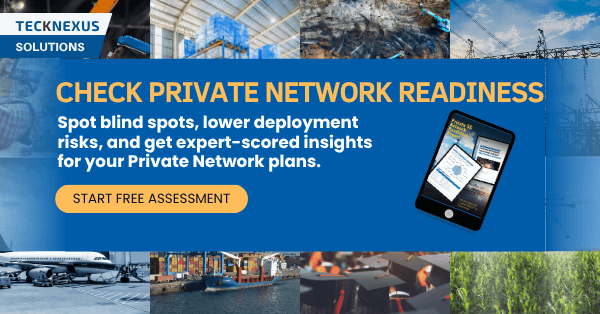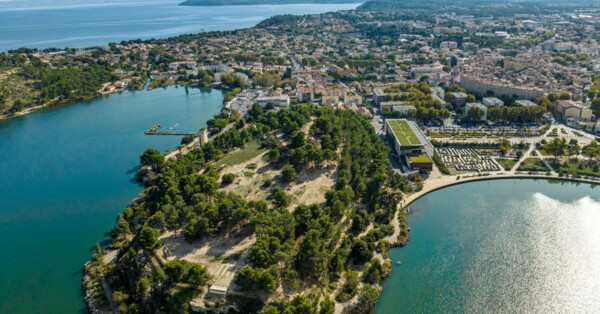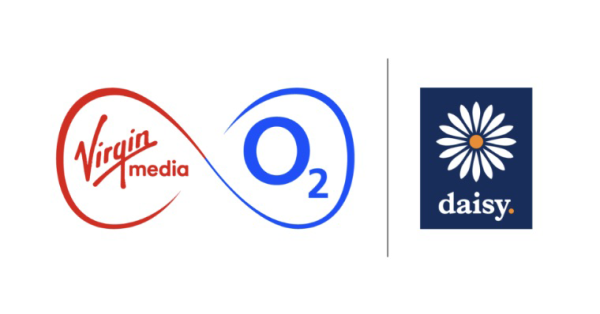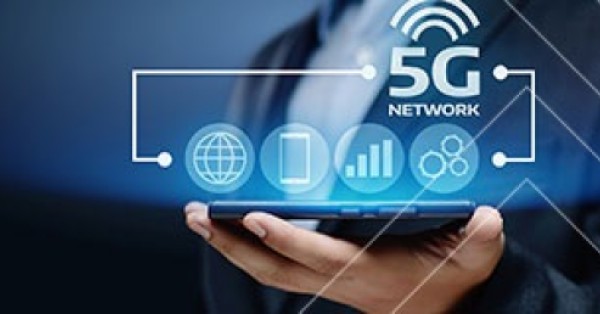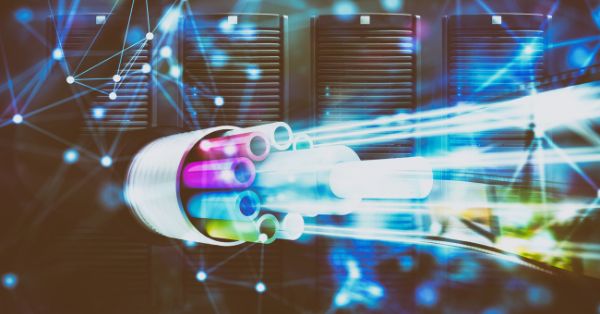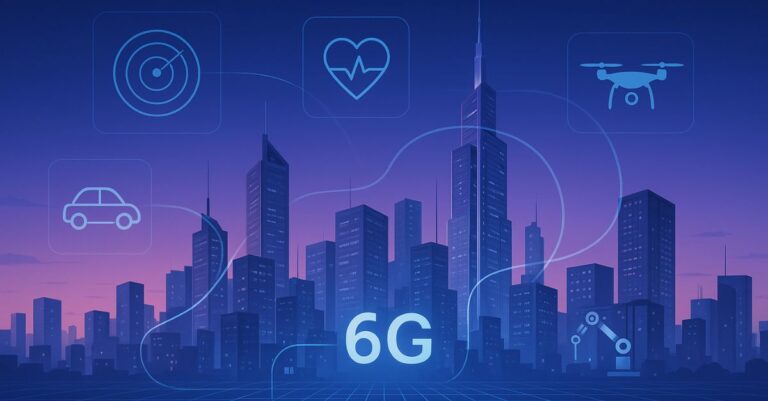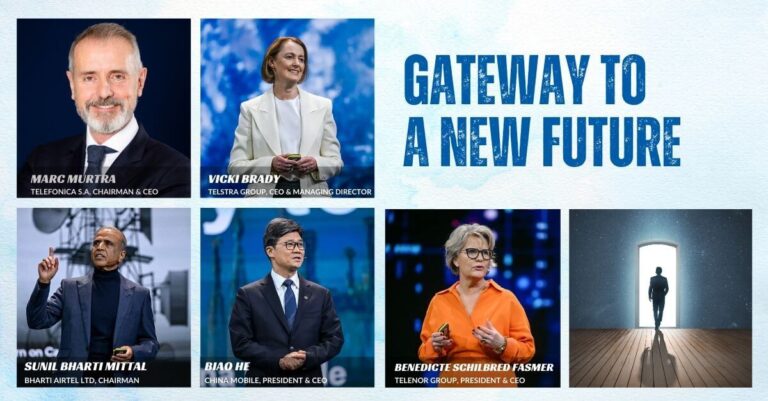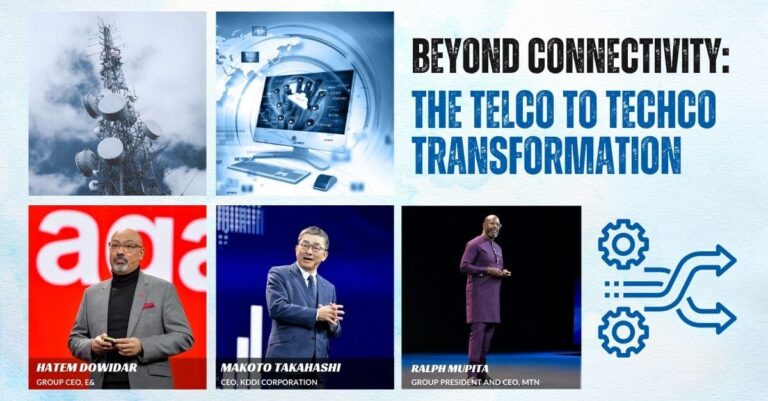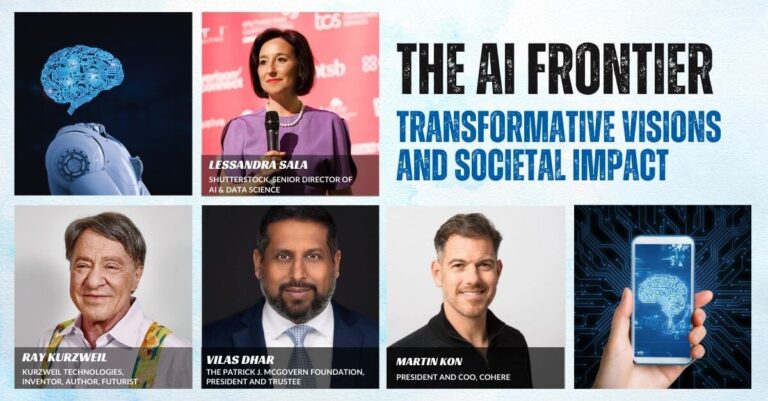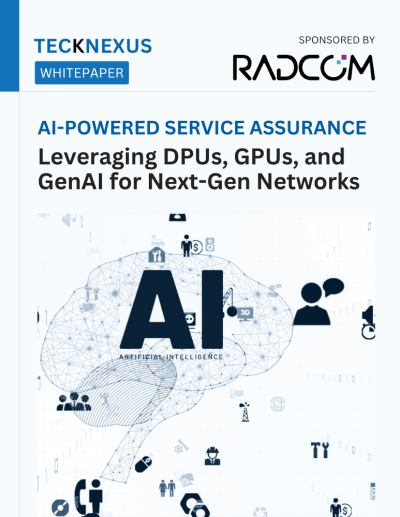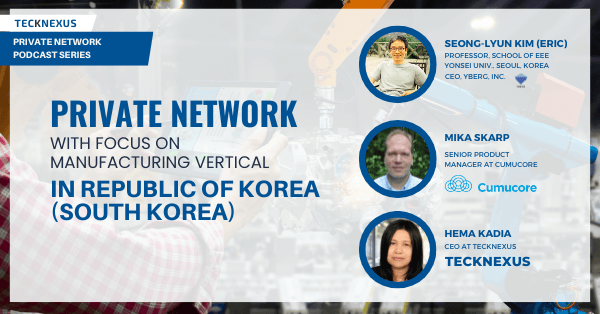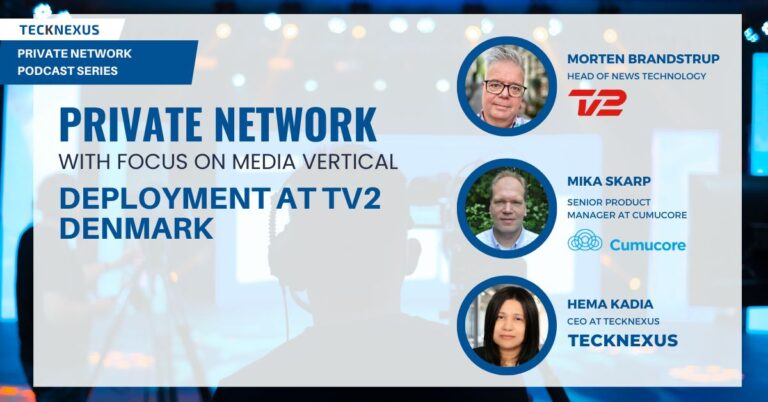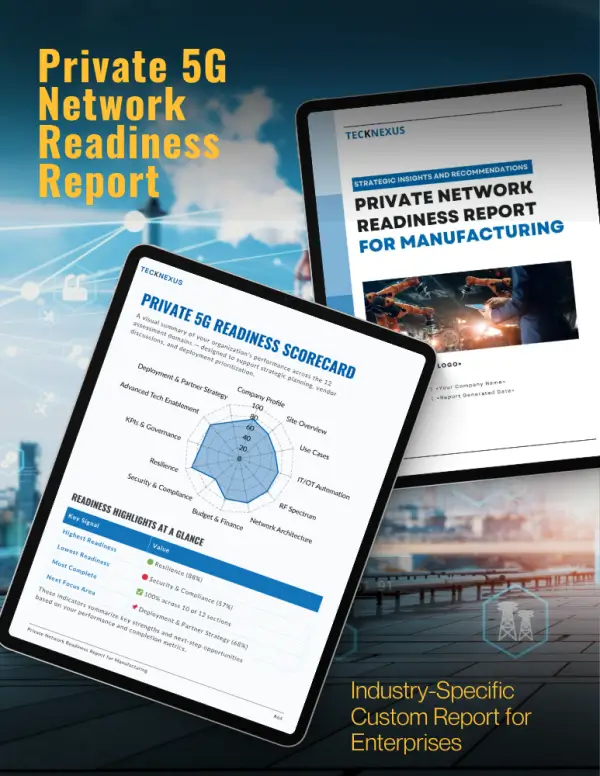Home » Smart Cities
Smart Cities
Essential insights and practical tools for navigating private networks. Get Details.
Available on Amazon & Google Books
Subscribe To Our Newsletter
- Tech News & Insight
- June 27, 2025
- Hema Kadia
- Usecase
- June 23, 2025
- Hema Kadia
- Tech News & Insight
- May 12, 2025
- Hema Kadia
- Tech News & Insight
- May 9, 2025
- Rohit Nambiar
- Tech News & Insight
- April 28, 2025
- Hema Kadia
- Tech News & Insight
- April 26, 2025
- Hema Kadia
- Tech News & Insight
- April 21, 2025
- Hema Kadia
- Article & Insights
- April 10, 2025
- Hema Kadia
- Article & Insights
- April 10, 2025
- Hema Kadia
- 5G, 6G, AI, Edge/MEC, IoT, Satellite & NTN, Sustainability
- Data Center, Etisalat, Fiber, FinTech, KDDI, MTN, MWC, Partnerships, Robotic
- Smart Cities
- Article & Insights
- April 10, 2025
- Hema Kadia
HOW CAN 5G DRIVE SMART CITY DEVELOPMENT?
What is a smart city?
A smart city is an urban area that harnesses technology to enhance the well-being of its residents. The goal of a smart city is to foster efficiency, sustainability, and enhanced living conditions within its confines. It employs an array of sensors and data-gathering tools to optimize the use of resources like electricity, water, and transit systems. Furthermore, it leverages information and communication technologies (ICT) to boost interaction between citizens and authorities, streamline public services, and refine the overall functionality of city management.
What are the challenges and considerations for smart city development?
There are several challenges associated with the development of smart cities, such as:
Cost-effective, Reliable, and Efficient Technology and Infrastructure: Developing a smart city requires significant investment in technology and infrastructure. The challenge lies in selecting solutions that are not only advanced but also cost-effective in the long run. This includes reliable energy sources, resilient communication networks, and efficient transportation systems. Cities must ensure that the technology can withstand the test of time and usage without requiring prohibitively expensive upgrades.
Data Processing and Analysis: Smart cities generate massive amounts of data through sensors and IoT devices. The challenge is to process and analyze this data to derive actionable insights effectively. This requires robust data analytics platforms and skilled personnel who can interpret data for city planning and operational improvements.
Developing a Governance Framework: A governance framework is essential to ensure that the benefits of a smart city reach all residents equitably. This framework should oversee data usage, protect citizens’ rights, and ensure that the projects undertaken serve the public interest. Policies must be transparent and inclusive to prevent misuse of data and ensure that no group is disadvantaged.
Interoperability of Systems and Applications: A smart city employs various systems and applications, often developed by different vendors. Ensuring these components can communicate and work together seamlessly is a significant challenge. Standardization of technology and open platforms can help achieve interoperability, which is crucial for integrated city operations.
Security and Privacy Concerns: With the increased collection of data comes the heightened risk of breaches and privacy issues. Smart cities must implement stringent cybersecurity measures to protect against hacking, data theft, and unauthorized surveillance. Safeguarding citizens’ privacy while still utilizing data to improve services is a delicate balance that must be maintained.
Engaging Citizens: For a smart city initiative to be successful, it must have the buy-in of its citizens. Engaging the community in the planning and implementation phases can be challenging but is vital for ensuring the city’s developments meet the needs and expectations of its residents. This engagement can take the form of public consultations, surveys, and pilot projects.
Scalability: As urban populations grow, smart cities must be able to scale their services and infrastructure accordingly. Planning for future expansion is a significant challenge, especially in rapidly growing cities. This includes scalable urban planning, modular technology solutions, and flexible policies that can adapt to changing demographics and technologies.
How can 5G help with smart city development?
5G, in combination with other technologies such as IoT and artificial intelligence, are important technologies for smart city development.
5G can help with smart city development by providing faster data speeds and more bandwidth, making it possible to transmit large amounts of data generated by smart city sensors and devices quickly and efficiently. IoT is necessary for collecting and managing data from sensors and devices throughout the city. And artificial intelligence is necessary for analyzing and making decisions based on that data. In addition, 5G is low-latency, meaning that response times are very fast, which is important for real-time interactions between people and devices. For example, 5G-enabled augmented reality (AR) can provide real-time information about traffic congestion, weather conditions, and public transportation schedules. This can help city residents make better decisions about how to get around town.
However, many smart city applications don’t need a constant broadband 5G connection as it would deplete the sensor’s battery. For example, sensors monitoring urban area pollution might send small data packets to a cloud-based platform once or twice a day. Therefore, in this case, 5G wouldn’t be necessary. Although 5G’s current capabilities are limited for smart cities, it will become much more powerful as the cellular standard evolves. LTE-M and NB-IoT are already embedded in 5G technology, and 2022 3GPP Release (Rel) 17 enables low-power and massive IoT applications to run more smoothly, taking smart city advantages to the next level.
What are the 5G and smart city use cases?
The use cases for smart cities are vast and varied. However, some of the common uses include reducing traffic congestion, improving public safety, efficient energy management, developing a city-wide recycling program, installing sensors to monitor air quality, improving the quality of life for citizens by providing enhanced services such as real-time traffic updates, intelligent transportation systems, and more efficient 311 systems.
Smart Mobility
Smart mobility is a term used to describe the movement of people and goods within a city in an efficient and sustainable way. The current challenges to enable smart mobility include the need for improved data sharing and connectivity and the development of new technologies that can support data-driven decision-making for smart mobility initiatives.
One way that technology can help with smart mobility is through the use of sensors. Sensors can detect environmental conditions, such as weather and traffic, and then transmit this information to drivers or transportation planners in real time. This information can help drivers make better decisions about when to travel and how to route their trips, leading to improved traffic flow and reduced congestion.
5G will be essential to the success of smart mobility applications because it will provide the low latency, high bandwidth, and massive connectivity needed to support millions of devices and sensors. With 5G, cities can harness the power of IoT, big data analytics, and artificial intelligence to make real-time decisions that improve traffic flow and reduce pollution. As a result, smart mobility can make cities more livable and sustainable by reducing traffic congestion, emissions, and travel time.
Smart Buildings and Spaces
Smart buildings and spaces are specifically designed and engineered with features that allow for easier management and operation. They can include advanced lighting, heating, and cooling systems and security features that allow for more centralized control. In addition, smart buildings and spaces typically have open floor plans that facilitate communication and collaboration between workers.
5 G’s significantly higher speeds and bandwidth than current cellular networks and ability to handle a large number of simultaneous connections are essential for supporting the growing number of devices and applications, making it well-suited for smart buildings that are home to a large number of connected devices. In addition, 5G networks are more reliable and resilient than current networks, which is important for ensuring consistent connectivity in smart buildings. It also handles voice and video traffic very well, which will be important for features like conferencing and interactive displays.
5G can enable new and innovative ways of managing building and space operations. For example, 5G can remotely monitor and manage HVAC, lighting, and security systems. In addition, 5G can provide real-time occupancy data to optimize building usage and improve occupant comfort.
Public Safety
In a smart city, data is collected and analyzed in real-time to help identify and respond to problems before they become emergencies. For example, sensors can detect gunshots or fires, and police or firefighters can be dispatched immediately. Additionally, public safety officials can use data to improve their planning and response to emergencies. For example, after a major storm, officials can use data from traffic cameras and weather sensors to improve their understanding of the impact of the storm and plan better for future storms.
5G is an important technology for public safety because it can help first responders and other emergency personnel connect quickly and easily with each other during emergencies. 5G can also quickly transmit large amounts of data from connected devices such as body cams, connected headsets, and augmented reality smart classes, which can help share information about emergencies. Larger connected devices and sensors can also help officials better monitor and manage critical infrastructures such as bridges, tunnels, and roads.
Smart Lighting
Smart lighting is a type of lighting that can be controlled wirelessly. Smart lights can be turned on and off, dimmed, and changed to different colors, depending on the specific light.
Public and commercial lighting infrastructure is expensive and one of the greatest contributors to energy waste. Outdoor smart lighting solutions are a great place to start. By installing 5G and IoT capabilities into city infrastructure, cities can reduce energy costs by monitoring and optimizing usage and making the city safer by having real-time information on its status.
How 5G can contribute to the sustainability goals of the smart cities?
The advent of 5G technology is not just about speed and connectivity; it’s a pivotal factor in the pursuit of sustainability within urban landscapes. As cities worldwide strive to become smarter, the integration of 5G stands to be a cornerstone in achieving environmental targets. This revolutionary technology can bolster energy efficiency, reduce waste, and facilitate the creation of green initiatives.
One of the primary ways 5G contributes to sustainability is through its ability to support a vast network of IoT devices. These devices can monitor and manage city resources in real time, from optimizing traffic flow to reducing energy usage in public buildings. For instance, with 5G-enabled IoT, streetlights can adjust their brightness based on pedestrian and vehicle presence, saving significant amounts of energy.
Moreover, 5G’s rapid data processing capabilities enable smart grids to be more responsive to changes in energy demand, thus supporting the integration of renewable energy sources. By efficiently balancing supply and demand, cities can decrease reliance on fossil fuels and lower greenhouse gas emissions.
Reducing Carbon Footprints Through Optimized City Operations: The role of 5G in minimizing the carbon footprint of city operations is profound. By enabling a more intelligent transportation network, 5G can help reduce traffic congestion, which in turn decreases vehicle emissions. Public transport can become more reliable with 5G, encouraging its use and further cutting down on individual car use.
In waste management, 5G can empower systems that identify and sort recyclables more effectively, diverting waste from landfills and promoting recycling. Additionally, 5G can improve water conservation through smart sensors that detect leaks and optimize water distribution, preventing unnecessary wastage.
5G also underpins the smart building technologies that monitor and control heating, ventilation, air conditioning, and lighting systems to ensure they are only used when necessary. This not only reduces emissions but also lowers the energy bills for these structures.
Overall, the environmental impact of smart cities powered by 5G technology is a testament to how digital innovation can foster not just smarter but also greener urban environments. As cities continue to grow, leveraging 5G for sustainable development is essential to ensure a healthier planet for future generations.
How do smart cities secure infrastructure and uphold data privacy?
Enhancing Cybersecurity in Smart City Infrastructures
As urban centers evolve into smart cities, their infrastructure becomes increasingly interconnected through the Internet of Things (IoT) devices and networks. This connectivity offers immense benefits for efficiency and convenience but also introduces vulnerabilities to cyber threats. To safeguard against these risks, smart cities must implement robust cybersecurity strategies.
Cybersecurity Measures:
- Firewalls and Encryption: Just as firewalls in buildings prevent the spread of fire, digital firewalls block unauthorized access to the city’s network. Encryption acts as a secret code, ensuring that even if data is intercepted, it cannot be understood by hackers.
- Intrusion Detection Systems (IDS): These systems monitor network traffic for suspicious activities, similar to security cameras monitoring for unusual behavior.
- Regular Security Audits: Experts conduct frequent checks on the city’s cyber defenses, much like routine inspections of bridges and roads, to find and fix any weak spots.
- Incident Response Protocols: In case of a cyber attack, there are clear plans in place, similar to emergency drills, to quickly address and mitigate any damage.
Protecting Citizens’ Privacy in Data Collection and Usage
The data collected in a smart city — from personal information to behavioral patterns — is invaluable for improving services but also raises concerns about privacy. Cities must balance data utility with privacy preservation.
Data Privacy Practices:
- Anonymization and Pseudonymization: These techniques alter personal data so the individual’s identity is concealed, akin to blurring faces in security footage.
- Data Minimization: This principle involves only collecting data that is strictly necessary for a service, much like how a librarian might only ask for the information needed to issue a library card.
- Consent Management Platforms: These systems ensure that citizens’ data is used only if they have agreed to it, much like signing a consent form before a medical procedure.
- Transparent Data Policies: Cities should clearly communicate to citizens how their data is being used, similar to the nutritional information on food packaging.
Training and Awareness
Smart cities must foster a culture of security awareness among city administrators and citizens alike.
Education Initiatives:
- Regular Training Programs: These programs educate city employees about the latest cybersecurity threats and best practices, much like ongoing professional training in other fields.
- Community Outreach: Informative campaigns can teach citizens about securing personal devices and recognizing phishing attempts, similar to public health awareness campaigns.
Compliance and Regulation
Adherence to national and international data protection regulations, such as the General Data Protection Regulation (GDPR), is crucial. Smart cities must:
- Conduct Impact Assessments: Assess how new technologies might affect privacy and security before they are implemented.
- Appoint Data Protection Officers (DPOs): These officers oversee compliance with privacy laws and act as liaisons between the city and regulatory bodies.
By integrating these technical, administrative, and regulatory measures, smart cities can create a secure and trust-filled environment for their citizens, ensuring that technological advancements do not compromise the foundational elements of security and privacy.
What are the new technologies shaping the future of smart cities?
How Do AI, IoT, and Blockchain Enhance Smart Cities with 5G?
Let’s delve into the roles of AI, IoT, and blockchain in smart cities, especially as they work hand-in-hand with the power of 5G.
- Artificial Intelligence (AI): AI is like the brain of a smart city. It analyzes data from cameras, sensors, and residents to make decisions. For example, it can predict where traffic jams will occur and adjust traffic lights to prevent them. AI can also spot patterns in energy use to help buildings use less power and even help police by spotting unusual activities that could be crimes.
- Internet of Things (IoT): IoT is like the city’s nervous system. It’s a network of devices, from traffic sensors to water meters, that are all connected online. These devices collect data on everything from how much water we use to how much trash we produce. With 5G, these devices can talk to each other in real-time. This means the city can react quickly, like rerouting buses to avoid a traffic jam that just started.
- Blockchain: Blockchain acts as the memory of a smart city. It safely stores all the data from AI and IoT in a way that’s hard to change or hack. This could be used for things like recording property sales or keeping track of who’s using what city services. It means everyone can trust the data, and it’s clear who did what, which is great for things like voting or public records.
Predicting the Future of Smart City Technologies
Looking forward, we can expect smart city technologies to become even more advanced and helpful.
- Smart Energy Grids: Imagine a city that knows how much electricity every house and building needs and can move electricity around to make sure there’s no waste. That’s what smart energy grids will do, and they’ll rely on AI to predict energy needs and IoT devices to track energy use in real-time.
- Advanced Public Safety: Future smart cities could use AI to understand risks like fires or floods better. They might have sensors that detect if a building is on fire and drones that automatically go to the scene to help firefighters see what’s happening.
- Healthcare Integration: Healthcare could change with smart cities, too. Hospitals could use AI to help diagnose diseases faster. And with 5G, doctors might even do surgeries from far away using robots that respond instantly to their commands.
- Enhanced Mobility: In the future, self-driving cars, buses, and bikes will all be connected. They’ll share information to reduce traffic and accidents. And they’ll be electric, charged at smart charging stations that know when the power grid has extra energy to give.
- Eco-friendly Cities: AI and IoT will make it easier to track and improve air and water quality. Parks could have sensors that tell the city when plants need water, and trash cans could alert waste management when they’re full to optimize pickup routes.
- Interactive Public Spaces: Public spaces could become interactive with AI and IoT. Parks might have lights and music that change when people walk by or public art that you can interact with through your phone.
- Education and Workforce Development: Smart cities could also change how we learn and work. Schools might use VR to take students on field trips around the world without leaving the classroom. And job training could be done through augmented reality (AR) apps that teach skills right on the job site.
The future of smart cities is about using these technologies to make life better for everyone who lives there. With 5G as the backbone, cities will not only be smart but also more responsive, safer, and more enjoyable for all citizens.
Who are smart city ecosystem players?
Some of the key players in the smart city ecosystem include
- Government, city officials, and municipalities
- Citizens
- Communication service providers
- Utility providers
- Infrastructure and technology providers
- System integrators
City officials and municipalities are responsible for governing and managing the city’s resources, while citizens can provide valuable insights into how the city is performing.
Whitepaper

Whitepaper

Article & Insights

Download Magazine
Subscribe To Our Newsletter
Executive Interviews
Brand Connect
Amplify Your Brand & Boost Your Business
- Thought-Leadership Management
- Magazine Article
- Executive Interviews
- Whitepapers
- Research Reports
- Custom Research
- Blog Series
- Webinars
- Podcasts
- Advertorials
- Display Ads
- Event Partnership




